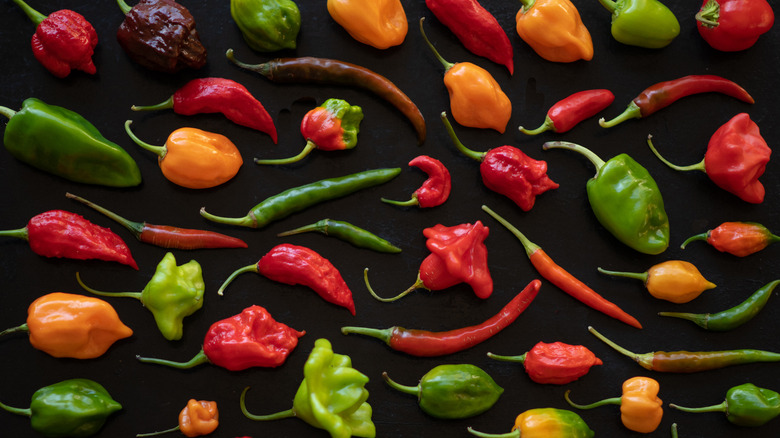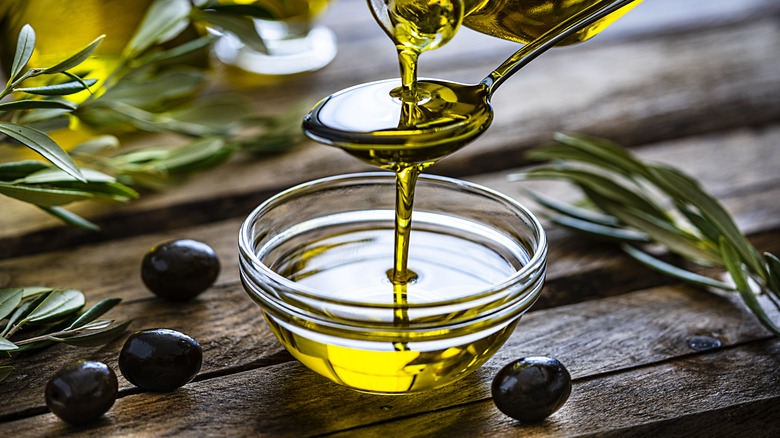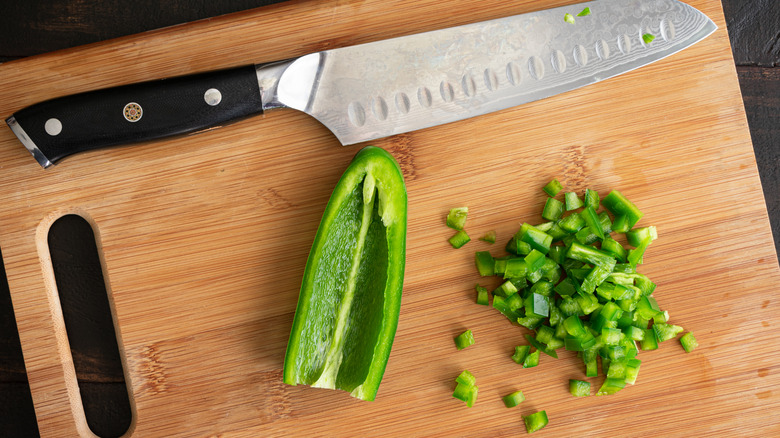Prevent Dreaded Hot Pepper Hands With An Olive Oil Hack
It's the bane of home cooking: Seeding and chopping hot peppers during meal prep and then touching your eyes before washing your hands. Or — let's be real — touching your eyes even after washing your hands! So-called "hot pepper hands" is a painful lesson you will hopefully only have to learn once. While disposable food-grade gloves are available, it's not necessary to go to that expense (and waste) in order to avoid hot pepper hands when a smidge of olive oil will do the trick.
The goal is to coat your hands thoroughly, top and bottom, and especially on and around the fingernails. It's not necessary to use a certain kind of olive oil, either. A basic cooking version will be fine. Nor is it necessary to use that much oil. Start with a teaspoon and see if that does the trick. Whether you're prepping habanero or jalapeño peppers, when you're done, you will still absolutely need to wash your hands, and the olive oil will provide a major assist there, too.
Oily hands and sharp knives don't mix
If you're a glutton for spicy punishment and don't plan on seeding your peppers — just chopping them — then it's only necessary to oil the hand holding the chili and not the one holding the knife. As awful as it is to have hot pepper hands (or eyes!), it's infinitely preferable to the pain of sliced fingers because the blade slipped out of your oily hand. With a bit of practice, it should be easy to stick to the one pepper-handling hand to avoid cross-contamination.
By the same token, if you're looking for that delicious, fruity habanero flavor without the heat (say, when making our pineapple habanero salsa) and plan on seeding the pepper, be sure to do the knife work of stemming and slicing in half first. Then, oil that hand as well and get down to the task of seeding. This might seem nit-picky, at least to those who've never suffered hot pepper hands, but there's a good reason for getting into such granular detail: Hot pepper oil is no joke.
Capsaicin: the source of the burn
The active ingredient that provides the kick in hot peppers is called capsaicin. Although many of us love to eat it, capsaicin is basically a neurotoxin developed by pepper plants as a defense mechanism against animals and fungi. That burning sensation you feel when touching or eating a hot pepper is a distinction without much of a difference: Exposure to capsaicin sends the same nerve signals as actual burns when it touches the skin or is ingested. Although you're not actually being burned, your body doesn't know the difference. The reason some people refer to the oily substance found in the pith and seeds of hot pepper as "napalm" is not only because it burns: It also evolved to chemically bind to nerve receptors in your skin and stick on there. Talk about a deterrent!
Capsaicin is not water-soluble — which is why drinking ice water to alleviate the burn in your throat will only spread the stuff around. It dissolves in fat, yet another reason smearing your chili-handling hands with olive oil is so effective. Olive oil provides a barrier for your skin, begins to dissolve the capsaicin, and helps the soapy water eliminate the residue when washing up after prep. So, remember: A teaspoon of prevention is worth a quart of hot pepper-handed tears.


